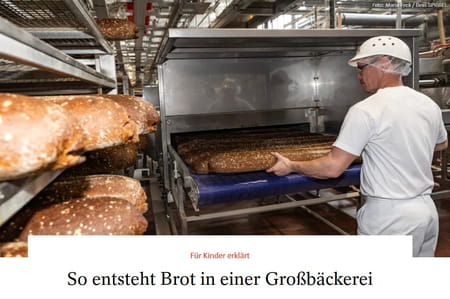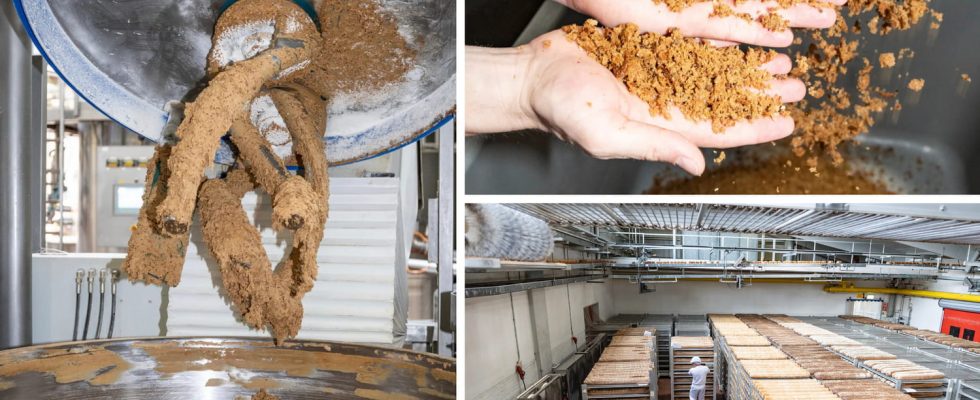In this monumental industrial bakery, bread is made by the tens of thousands of tons. A report shows how it works, with supporting photos.
Sliced bread, to bake yourself, brioche and especially sandwich bread… Industrial bread is present everywhere, even if artisanal bakeries are resisting in France, the land of the baguette. Sometimes gigantic factories supply the leaders in the sector such as Harrys, Jacquet and the distributors’ brands.
And industrial baking still has a bright future. The French consume 58 kg of bread per year on average. While the white baguette has come dangerously close to the ceiling price of 1 euro this year with inflation, the traditional baguette is now around 1.30 euros on average in bakeries. Prices which can be much lower on industrial products.
In France, the number 1 in the sector, Harrys, has a factory in Châteauroux which produces around 300,000 packets of sandwich bread per day in addition to the production carried out in Lyon, Talmont St Hilaire (Vendée) and Valenciennes (North). But the company has many other production centers in Europe, including a giant factory in Germany, near Hamburg, where journalists from the Spiegel newspaper were able to produce a report.
The French company produces and transforms hundreds of tonnes of very varied doughs every day, which end up in white, black or toasted bread, before landing on the shelves of thousands of supermarkets.

In the report, everything is detailed: the daily parade of trucks which deliver the raw materials, the transport into enormous silos via long pipes, then the production phase.
Flour, water, salt, sugar, yeast, seeds… After the ingredients have been measured by a computer, a seemingly unappetizing dough is obtained by mechanical kneading. A machine will then shape it into long logs which will pass by the hundreds on an endless belt, where they will be prepared for cooking.
This is done in equally monumental ovens (around 60 meters) and controlled remotely, before sorting, sending to cooling chambers, then cutting and bagging.
Several checks are carried out during the process, including a final one by X-ray scanner to detect defects, but also possible foreign bodies such as pieces of glass, plastic or metal. A faulty loaf will be taken out of the package, chopped and mixed again with the next batch of dough. The rest will be delivered overnight to supermarkets by truck.
A spectacle which did not fail to provoke a reaction on social networks. When many pointed out the harmful competition to “village bakeries”, others expressed their disgust for “a pure mass product, composed mainly of synthetic products!”. “My advice, don’t touch it, you can’t do worse in bread making than in this chemical factory,” wrote one reader on MSN.
